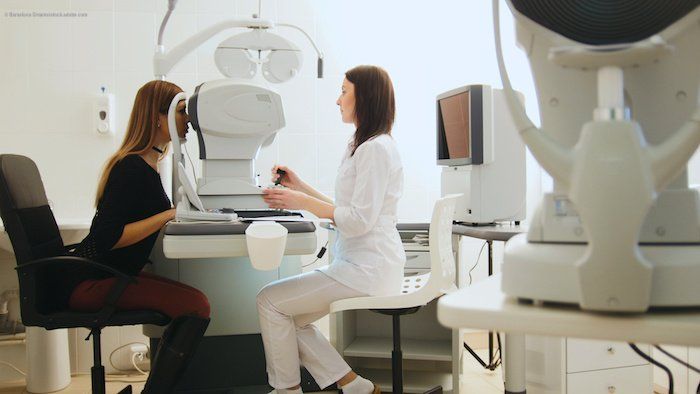Article
CXL-LASIK pairing can enhance refractive outcomes
Author(s):
Providing findings from a retrospective study, Li Lim, MD, noted that eyes with high myopia benefit from CXL add-on to LASIK, resulting in safety, efficacy, and predictability with refractive outcomes that are more stable than those achieved with LASIK alone.

LASIK with simultaneous corneal crosslinking (CXL) for treatment of high myopia is associated with good safety, efficacy, and predictability, and the refractive outcomes are more stable than those achieved with LASIK alone, said Li Lim, MD.
Speaking at the ASCRS-ASOA annual meeting, being held May 3-7 at the Convention Center in San Diego, CA, Dr. Lim presented findings from a retrospective study that included 163 eyes of 85 patients treated with combination LASIK-CXL (LASIK Xtra) at the Singapore National Eye Centre between 2013 and 2017. Eyes were followed for up to three years.
“Refractive regression after LASIK for high myopia is well known. Our case series of LASIK-CXL showed better predictability, stability, and less regression than reported in previous studies of LASIK only for high myopia,” said Dr. Lim, adjunct associate professor and senior consultant, Corneal & External Eye Disease Department, Singapore National Eye Centre, Singapore. “Further long-term studies are required now for validation of the optimal CXL settings.”
The protocol used for the LASIK-CXL procedure was as follows. A LASIK flap (100 to 110 μm) was created with a femtosecond laser (IntraLase IFS, Johnson & Johnson) and the excimer laser ablation was performed with a wavefront optimized profile (WaveLight EX500, Alcon Laboratories).
With the flap still raised, an accelerated CXL protocol was used. Riboflavin 0.25% (VibeX Xtra, Avedro) was applied to the stromal bed for a 45-second soak followed by stromal bed irrigation. Then the flap was repositioned and ultraviolet A illumination (KXL CXL system, Avedro) was delivered for 46 seconds using a fluence of 30mW/cm2 (total energy 1.4 J/cm2).
Study data
Patients included in the study had a mean age of 29 years (range 21 to 46 years) and almost two-thirds of the population was female. Mean preoperative spherical equivalent (SE) was -8.60 D (range -4.75 to -11.75 D) and mean attempted correction was -8.84 D (range -5.25 to -11.88 D). Outcomes data were available for 67 eyes seen at one year, 54 eyes seen at two years, and 32 eyes seen at three years.
Mean SE at 1 year was 0.14 D. Data on mean SE from follow-up at 2 years (0.02 D), and 3 years (-0.07 D) showed good refractive stability.
The efficacy analysis showed that approximately 70% of eyes achieved uncorrected visual acuity (UCVA) of 20/20 or better at all follow-up intervals and ≥95% had UCVA of 20/40 or better. The efficacy index, calculated as the quotient of postop UCVA/preop BCVA, was 0.95 at one year, 0.96 at two years, and 0.92 at three years.
Reporting the predictability outcomes, Dr. Lim said that achieved SE was within 1.0 D of attempted correction in ≥95% of eyes at all follow-up intervals. The percentage of eyes with an achieved SE within 0.5 D of attempted correction was 86% at one year, 92% at two years, and 81% at three years.
The safety index (postop BCVA/preop BCVA) was ≥1.10 at one, two, and three years. No eyes lost more than two lines of BCVA at any of the follow-up intervals, and BCVA was the same or better than the preoperative BCVA in approximately 95% of eyes seen at one and two years and in 100% of eyes seen at three years.
Literature review
Dr. Lim identified seven studies reporting data from at least 1 year of follow-up after LASIK-CXL for myopia, and she discussed a study by Kanellopoulos et al. [J Cataract Refract Surg. 2015;41(7):1426-1433] that had two years of follow-up and was the only randomly selected comparative trial.
Results of the comparative study showed that compared with LASIK only, LASIK-CXL was associated with significantly better UCVA results.
“Kanellopoulos et al. reported UCVA was 20/20 or better in 85% of eyes treated with LASIK-CXL whereas only 72% of eyes in our case series achieved that same level of vision,” Dr. Lim said. “The lower efficacy in our study may be explained by the fact that our population had higher myopia. Mean preoperative SE in our series was -8.84 D and was -6.67 D in the LASIK-CXL group in the comparative study.”
Data on refractive stability in the published comparative trial showed a statistically significant difference favoring the combined procedure. During the 2 years of follow-up, a +0.57 D shift in the flat meridian and +0.54 D shift in the steep meridian occurred in eyes having LASIK only compared with shifts of 0.03 D and 0.05 D in the LASIK-CXL group.
Dr. Lim noted that the predictability of LASIK-CXL in the series she presented was comparable to that reported by Kanellopoulos et al.
Mechanisms for stability
Dr. Lim suggested two factors that could explain the better stability of LASIK-CXL compared with LASIK alone for treatment of high myopia.
“Previous studies show increased epithelial thickness after LASIK correction for high myopia that is not seen in LASIK-CXL cases. Coupled with this difference, increased biomechanical instability after a LASIK only procedure may also explain the benefit of less regression after the combined procedure,” she said.
Disclosures:
Dr. Lim receives adhoc fees and travel expenses from Johnson & Johnson and Avedro.
Newsletter
Don’t miss out—get Ophthalmology Times updates on the latest clinical advancements and expert interviews, straight to your inbox.





